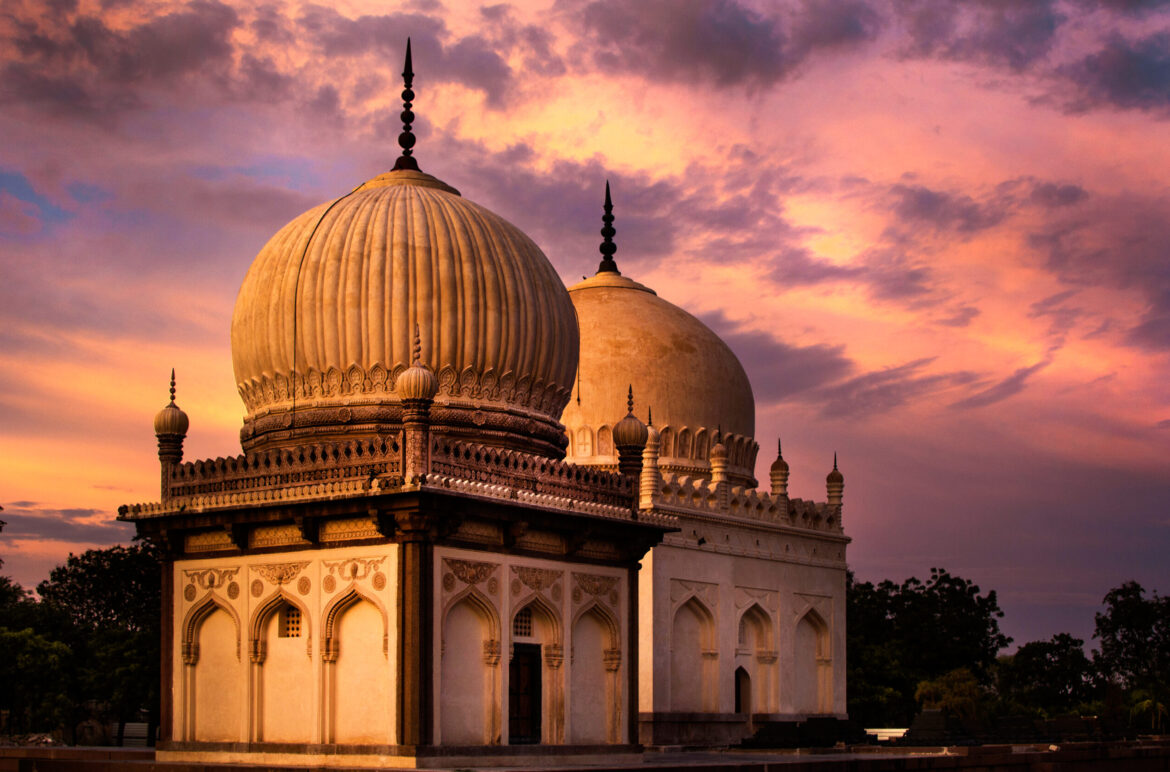Exploring the Magnificent Hyderabad Qutub Shahi Tombs
Nestled in the center of Hyderabad, India, the Qutub Shahi Tombs are a testimony to the grandeur of the Qutub Shahi dynasty and an architectural masterpiece. Constructed in the 16th and 17th centuries, these imposing edifices provide as the ultimate resting place for the kings of this powerful family. The complex is a blend of Persian, Pashtun, and Deccani architectural traditions, exhibiting great craftsmanship and historical value. It consists of about thirty finely built tombs and surrounding structures. With their own charms and historical tales, these tombs serve as mute witnesses to centuries of history, beckoning visitors to immerse themselves in the exquisite art and rich cultural legacy of a bygone era.
Background and Importance
The Qutub Shahi dynasty’s kings are finally laid to rest in the Qutub Shahi Tombs, which were constructed between the 16th and 17th centuries. The tombs exhibit remarkable workmanship and elaborate designs, combining elements of Persian, Hindu, and Pathan architecture. Mausoleums, mosques, and other monuments are among the approximately thirty buildings that make up the complex.
The narratives found within each tomb depict the kings and their families, showcasing the architectural and cultural styles of the time. The magnificence of these buildings is evidence of the artistic skill and architectural ability of the past.
Architectural Wonders
The Qutub Shahi Tombs welcome guests with an amazing display of domes, arches, minarets, and intricate sculptures. The tombs exhibit the skill of Deccani, Pashtun, and Persian architectural forms; they are built with beautiful domes and detailed stone sculptures.
Within the site stands the magnificent Great Mosque, a work of architecture. With its grand architecture and elaborate calligraphic inscriptions, the towering structure provides insight into the dynasty’s artistic and theological preferences.
Exploring the Complex
As soon as they approach the complex and walk down the calm paths bordered by lush gardens, guests feel as though they have traveled back in time. The serene atmosphere and the opulence of the tombs combine to create an ideal setting for reflection and appreciation of the historical treasures.
Every tomb has its own distinct architectural features and narratives. The fifth emperor and creator of Hyderabad, Muhammad Quli Qutb Shah, is remembered for his opulence and exquisite architecture in his mausoleum. The Qutub Shahi dynasty’s founder, Sultan Quli Qutb-ul-Mulk, is honored in his simple yet historically significant mausoleum.
The ideal time to visit
In Hyderabad, the milder months of October through March are the best times to visit the Qutub Shahi Tombs. It is comfortable to explore the vast complex during this time of year because the intense heat of the city is not a hindrance. It’s especially peaceful in the early mornings or late afternoons, when guests may enjoy a more mild atmosphere and take in the complex architecture and historical significance. A more immersive and peaceful experience in the peaceful surroundings of these historic wonders is also provided by the fact that there are frequently fewer visitors during this time of year.
Advice for Guests
Timing: To avoid the intense heat and take in the peaceful atmosphere, early morning or late afternoon is the ideal time to visit.
Guided Tours: Hiring a local guide can provide more in-depth explanations of the architectural subtleties and historical significance of the tombs.
Photography: There are plenty of opportunities for those who want to take pictures of the complex’s elaborate decorations and imposing features.
Respectful attire: It is advised to wear modest clothing when visiting these historical places out of a sense of decency.
In conclusion
The Qutub Shahi Tombs are a prime example of Hyderabad’s magnificent architecture and rich cultural legacy. Discovering this historical complex offers the opportunity to not only travel through time but also to understand the legacy that the Qutub Shahi emperors have left behind. For those who love history and beautiful architecture, the tombs are a must-see because of their elaborate carvings and peaceful environs, which convey the grandeur of a bygone era in every way.

